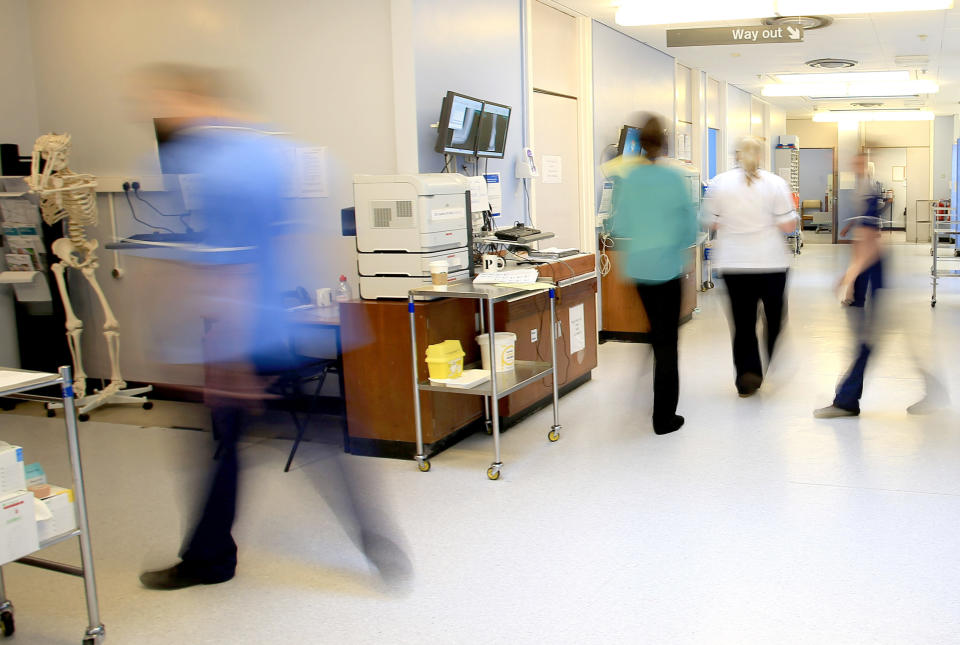Employment rate falls as Brexit takes its toll on the UK economy

Britain’s record jobs boom is under strain as official figures show the employment rate falling in recent months.
The UK’s employment rate dropped by 0.1% to 76% between March and May compared with February and April, according to Office for National Statistics (ONS) data published on Tuesday.
It is the first time the percentage of people in work in Britain has fallen over a quarter since June to August 2018, though it still remains higher than a year ago.
The employment rate dropped in May too, down 0.2% compared with April.
READ MORE: Why Britain’s jobs and pay miracle is not what it seems
The number of vacancies has also continued its decline since the start of the year, with an ONS survey of firms showing 19,000 fewer jobs advertised in the three months up to April than the three months up to May.
An estimated 32.75 million people in Britain are currently in work. The number of people in work was up around 28,000 compared to the previous three months, but the percentage in work fell as the working-age population increased faster.
Much of the small rise in jobs was in self-employment, while the actual number of employed workers fell by 0.3%.
It marked the largest fall in staff jobs since November 2011 according to Samuel Tombs, chief UK economist at Pantheon Macroeconomics.
READ MORE: UK wages rise at fastest rate in a decade
But the unemployment rate, the number of people actively looking for work, held steady at 3.8%, as predicted by economists. It remains at its lowest level since the 1970s, and new figures also show wages growing at the fastest rate in 11 years.
Hamish Muress, senior currency strategist at OFX, said the data had still “smashed expectations,” as the unemployment rate had not crept up and wages were rising faster than inflation.

The figures are likely to spark fresh alarm over the health of the economy with the UK’s Brexit deadline approaching, and widespread uncertainty deterring firms and consumers from spending amid growing signs of economic slowdown.
Some fear a no-deal Brexit could be catastrophic for the British economy, and the chances appear to be growing with Boris Johnson favourite to become the next UK prime minister later this month.
Unemployment had been broadly falling and employment rising in Britain since 2012-2013, with recent figures showing the highest number of people in work since records began in the 1970s.
Some economists had been sceptical about how long the record employment boom could last, with fears GDP figures next month could show Britain’s economy slid into reverse in the second quarter.
READ MORE: Richard Branson warns pound will slide to same value as dollar on no-deal Brexit
The decline in employment chimes with a recent British Chambers of Commerce survey, which showed a decline in the balance of firms that wanted to recruit new full-time workers in the first quarter of the year.
Several widely watched indicators on the health of the UK economy have been flagging red in recent weeks as Britain gets closer to Brexit date of 31 October.
Grim figures on the state of the economy have been published over the past month alone, with the worst performance in years reported in the manufacturing, services, construction and retail sectors.
READ MORE: House prices slide in Britain for the first time this year
Analysis by a property site also showed confidence sliding in the sensitive housing market on Monday, with the first decline in house prices this year last month.
Brexit uncertainty is commonly blamed for deterring firms and consumers from spending, amid growing signs of economic slowdown.
But employment minister Alok Sharma said: “Wages outpacing inflation for 16 months in a row, more people in work than ever before and joint-record female employment, means better prospects for many thousands of UK families and shows the continued resilience of the UK labour market.
“With unemployment still falling, remaining at its lowest level since 1974, it’s clear that UK employers continue to have confidence in our hard-working workforce.”
READ MORE: Brexit saps UK business confidence to its lowest in a decade

 Yahoo Finance
Yahoo Finance